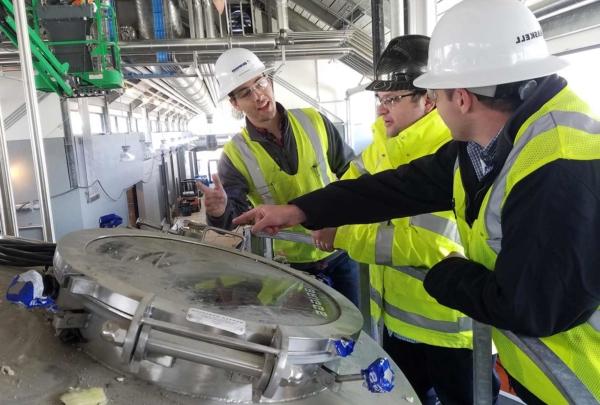As the craft distilling market has emerged, it has brought distilleries out of the darkness of aging warehouses. Distilleries today often become destinations by incorporating tasting rooms and allowing the public to interact with the distillation process. This presents new challenges and opportunities when designing a distillery, as you must balance your aesthetic and functional goals. In addition to getting your process and vision right, you also must factor in the nuances in building codes that will apply to your distillery.
Start the distillery design process by considering Louis Sullivan’s modernist mantra of “form follows function.” Without understanding your distillery process (or function) you cannot create the space (or form) for an efficient, functioning distillery. That brings us to our first of four key points in the Distillery Design Process.
- Lock Down Your Process
To design the right distillery for your needs, first you need to lock down your process. Perhaps you’re working back from your production target based on cases per year, or your process is based on working with existing equipment. You may have started with a simple block flow diagram, but now it is time to take that to the next level and put detail to your process flow. It is this distillation process that should serve as the foundation of your distillery design.
In a perfect world, we could shape a new building around your process, but reality (and budgets) have us often going into existing spaces that were not previously set up for a distillery. That is why it’s important to clearly define your process and production goals so that we can begin to view your building with those parameters in place.
- Understanding Space
At its core, a distillery is blend of many different building types. While the hospitality and public-facing aspect is an increasingly important component of a contemporary distillery, the distillation process itself still comprises several different building typologies ranging from hazardous to benign.
When you factor in process byproducts, such as explosive dusts and flammable vapors, with the goal of some form of public interaction, it’s important to understand the spaces you’re creating and how they may or may not interact with one another. Examining each step in the process from grain to glass and the requirements for each of those spaces will allow you to visualize how each of the spaces begins to tell the story your product.
- Making Sense of The TLA’s (Three Letter Acronyms)
From IBC (International Building Code), to EBC (Existing Building Code), to AHJ (Authority Having Jurisdiction), to NEC (National Electric Code), to NFPA (National Fire Protection Associate…ok that’s four letters) to about 50 more we could rattle off, we have to talk about codes and standards.
Before we get too far down the road on detailed design, it’s important that local, state, and national guidelines are examined and can be followed throughout the design process. The days of stills in sheds are gone as distilling has emerged from the shadows and, with that, building codes are catching up. Once you’ve developed basic drawings, it is always a good idea to get your local fire marshal and building officials involved. Early feedback avoids late surprises!
- None of Us Is as Smart as All of Us
You have your process locked in, you’ve roughed out your spaces and building flow, you’ve gotten feedback from your local officials, and now it’s time for your design team to make it all happen.
The team that puts a distillery together comes from a wide range of backgrounds, from mechanical engineers to maintenance team members to master distillers. It’s important that you keep all of the stakeholders involved in the detailed design process, because each will have valuable input as you dive into the details.
For example, you should have your maintenance people involved in laying out pumps to make sure they’re comfortable with accessibility. You should collaborate with marketing to map out your public/private spaces so that you can frame the perfect views along your tour path. Depending on your location, you may need to work with farmers to haul off your spent grain, which includes making sure they have adequate access. You’ll also be dealing with hazardous area classifications, so make sure your equipment suppliers are aware of the requirements for your space.
Holding weekly reviews with relevant stakeholders during the detailed design phase will pay dividends as you enter construction. Get buy-in from your team and you will move that much closer to your goal of opening a distillery!
Next: Make It Happen (Execute the Plan)
In our next post in the How to Build a Distillery series, it’s finally time to cross that all-important threshold from planning to execution. Let’s make it happen!
For more information, contact 澳门足彩app’s Beer, Wine & Spirits division leader, Anthony White.














